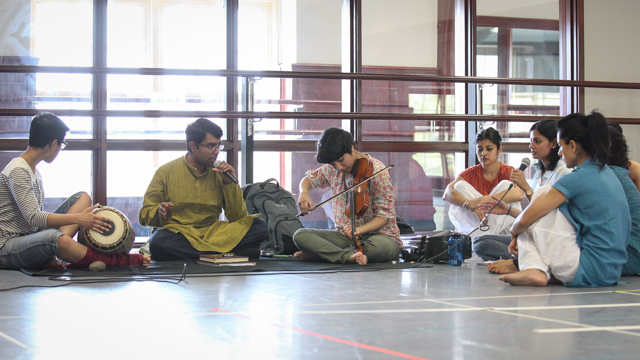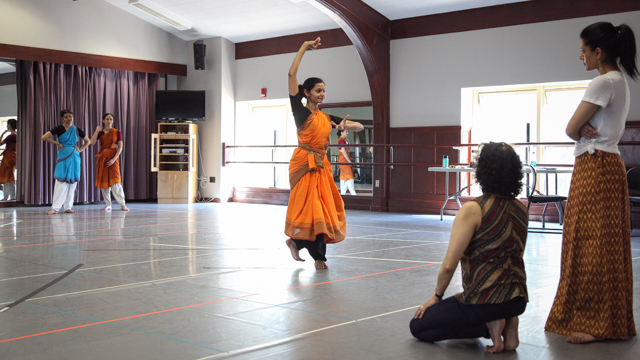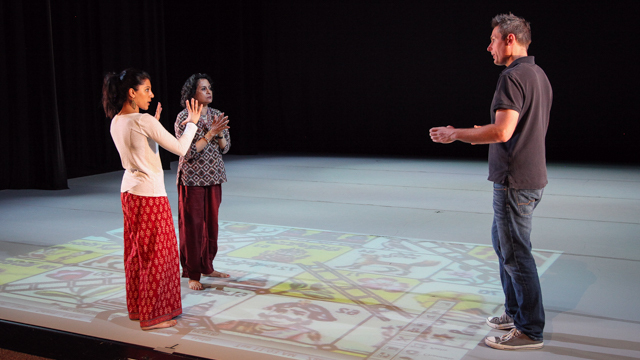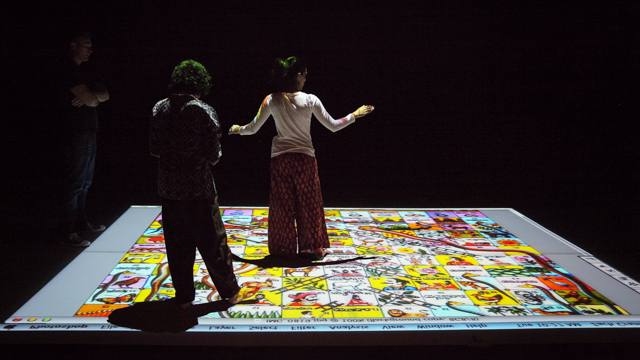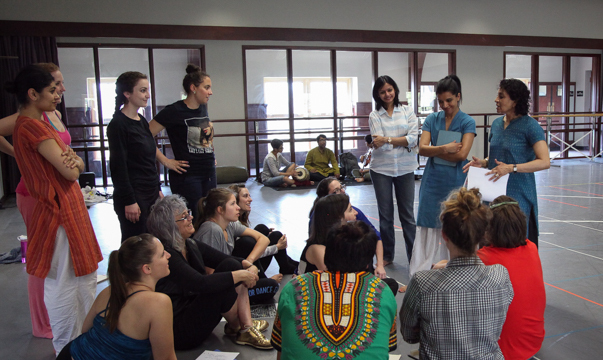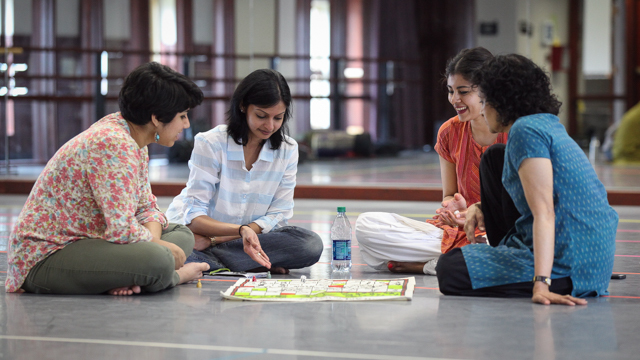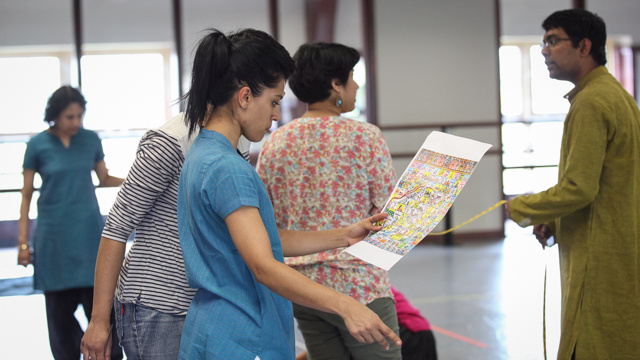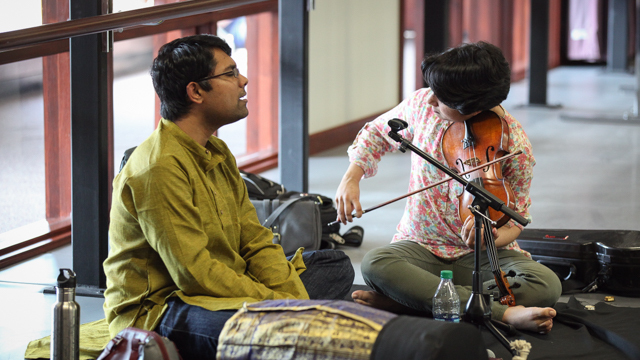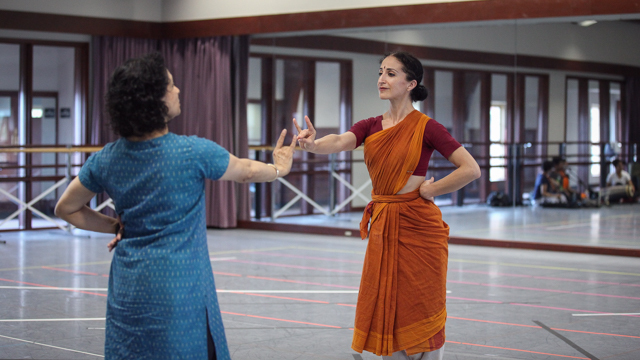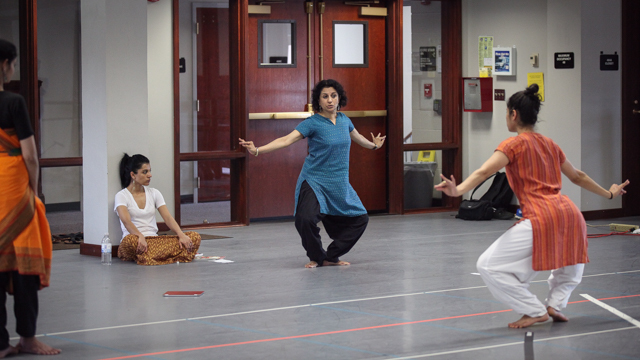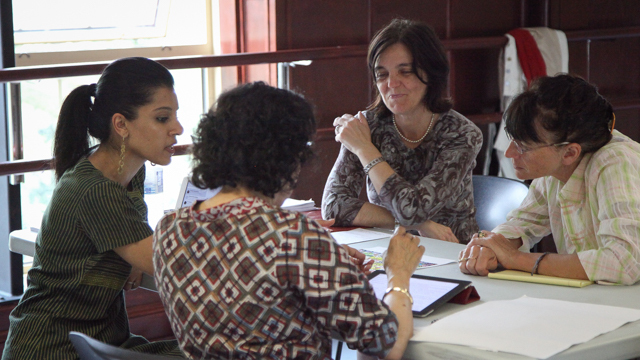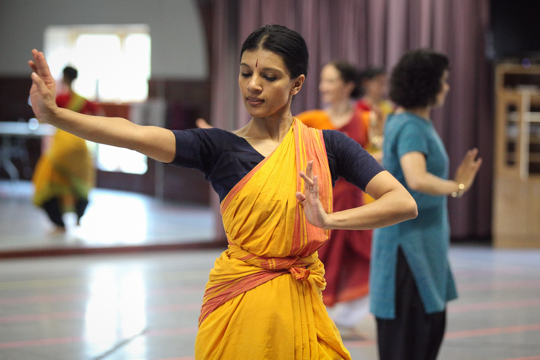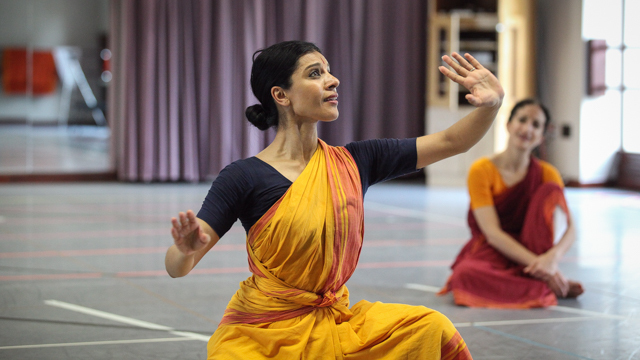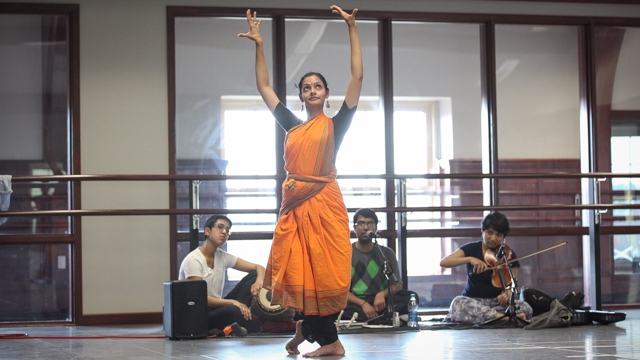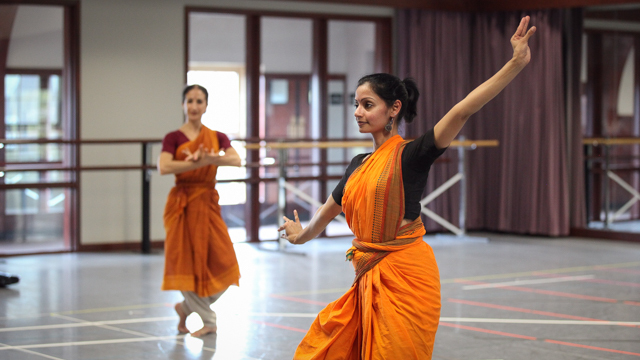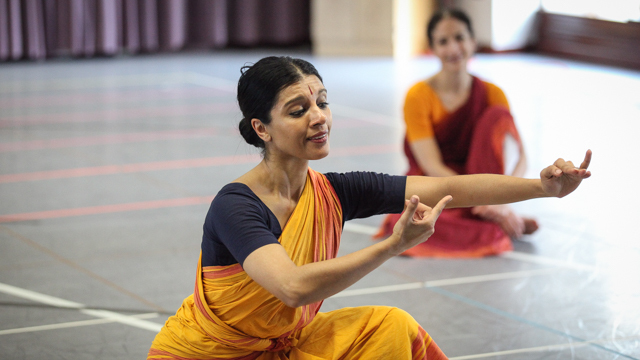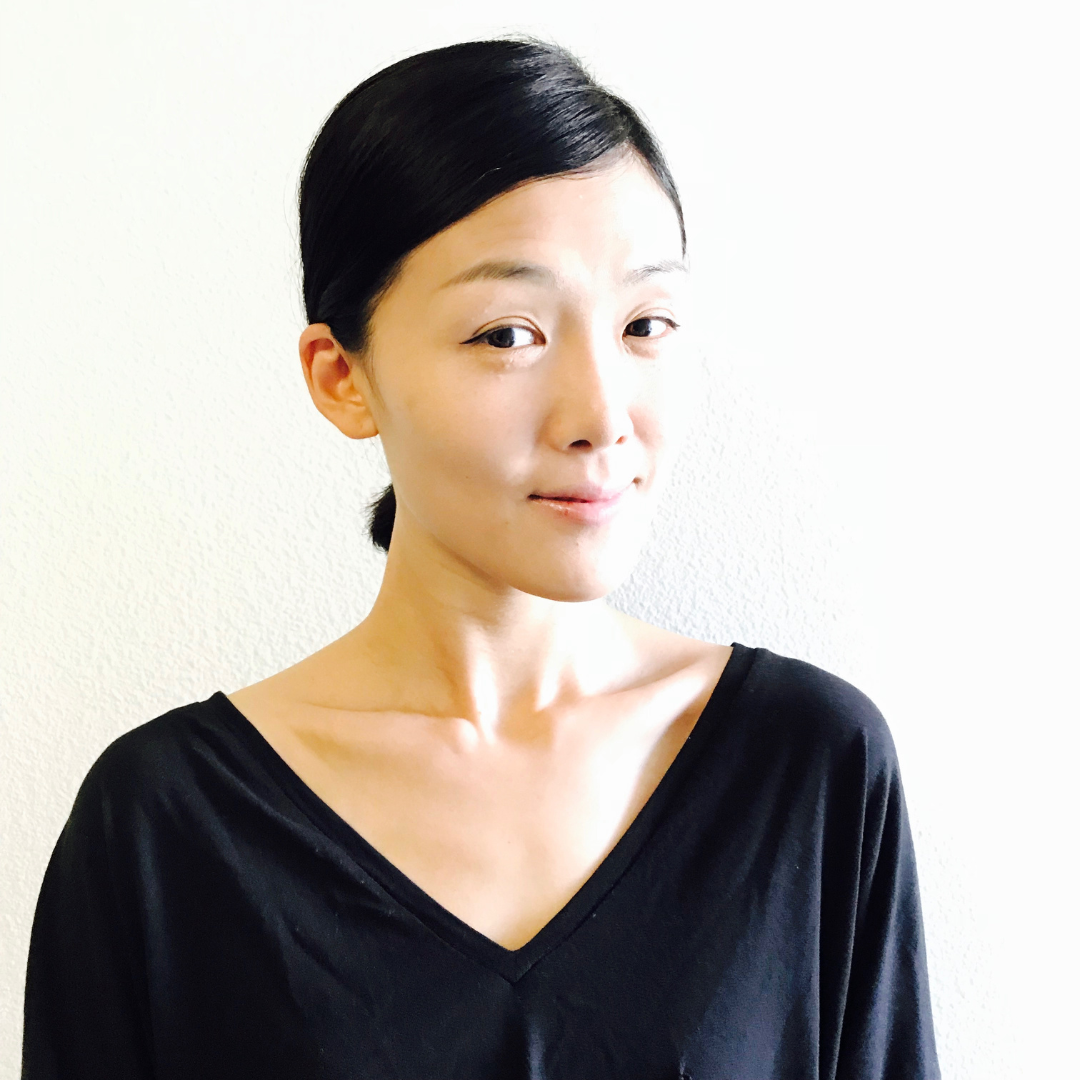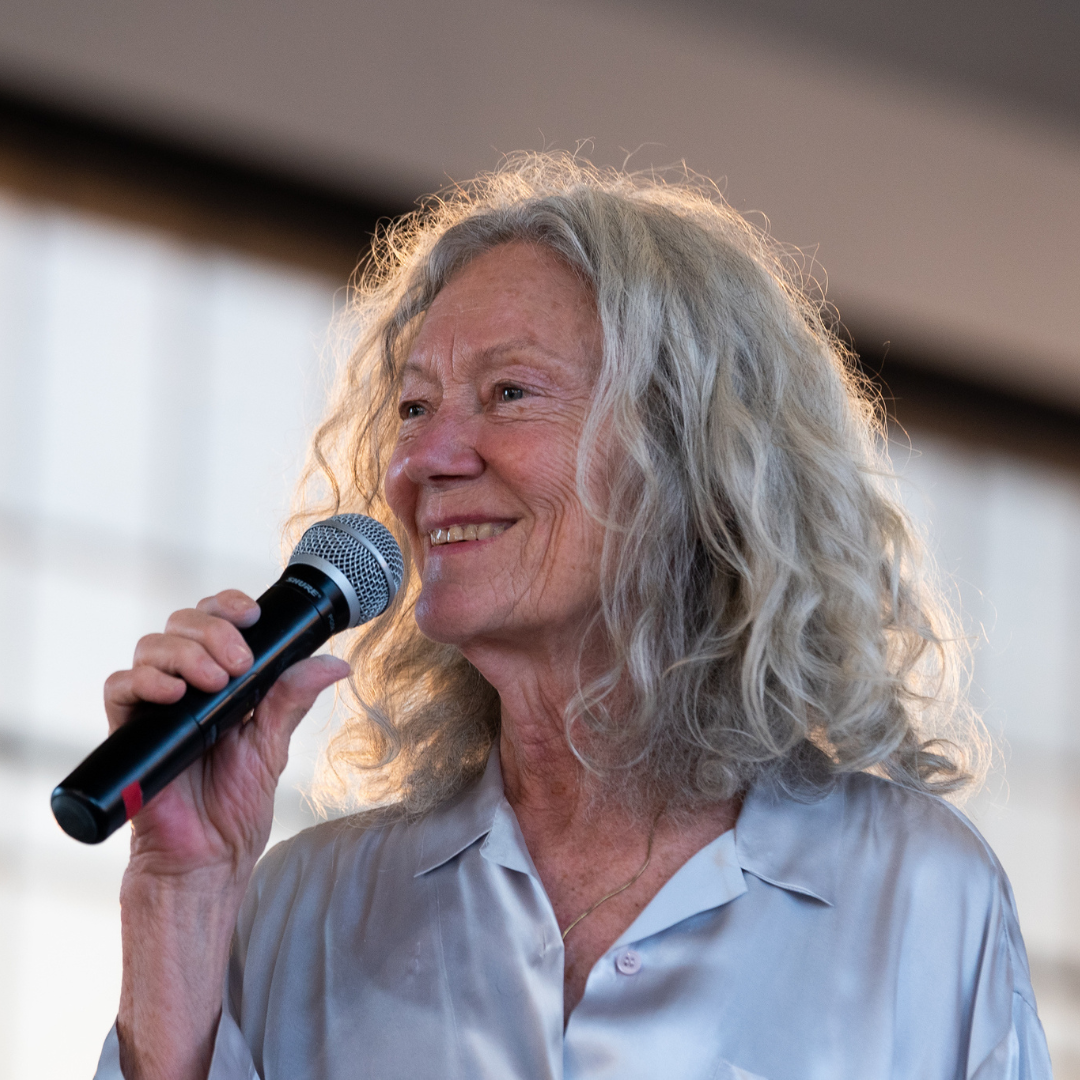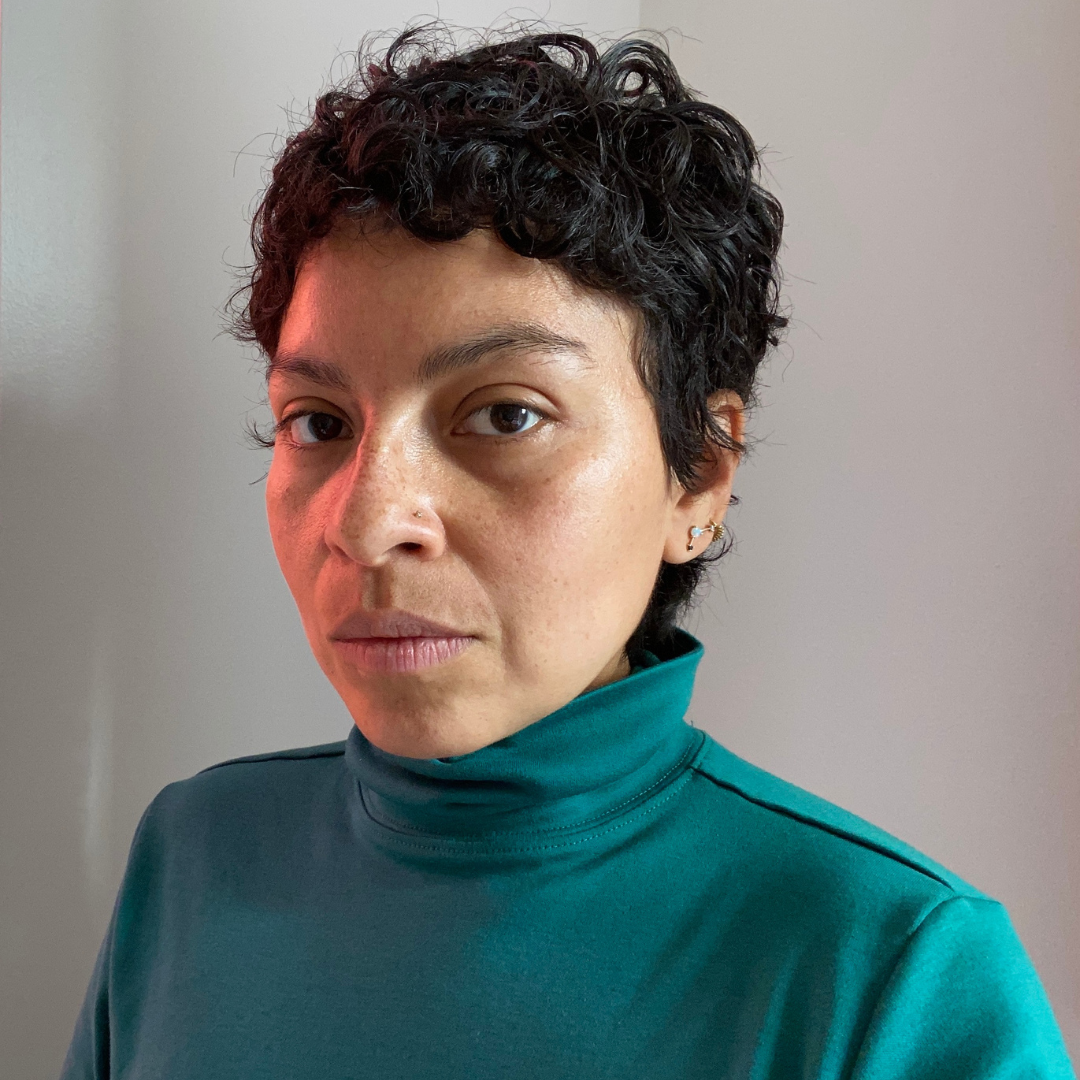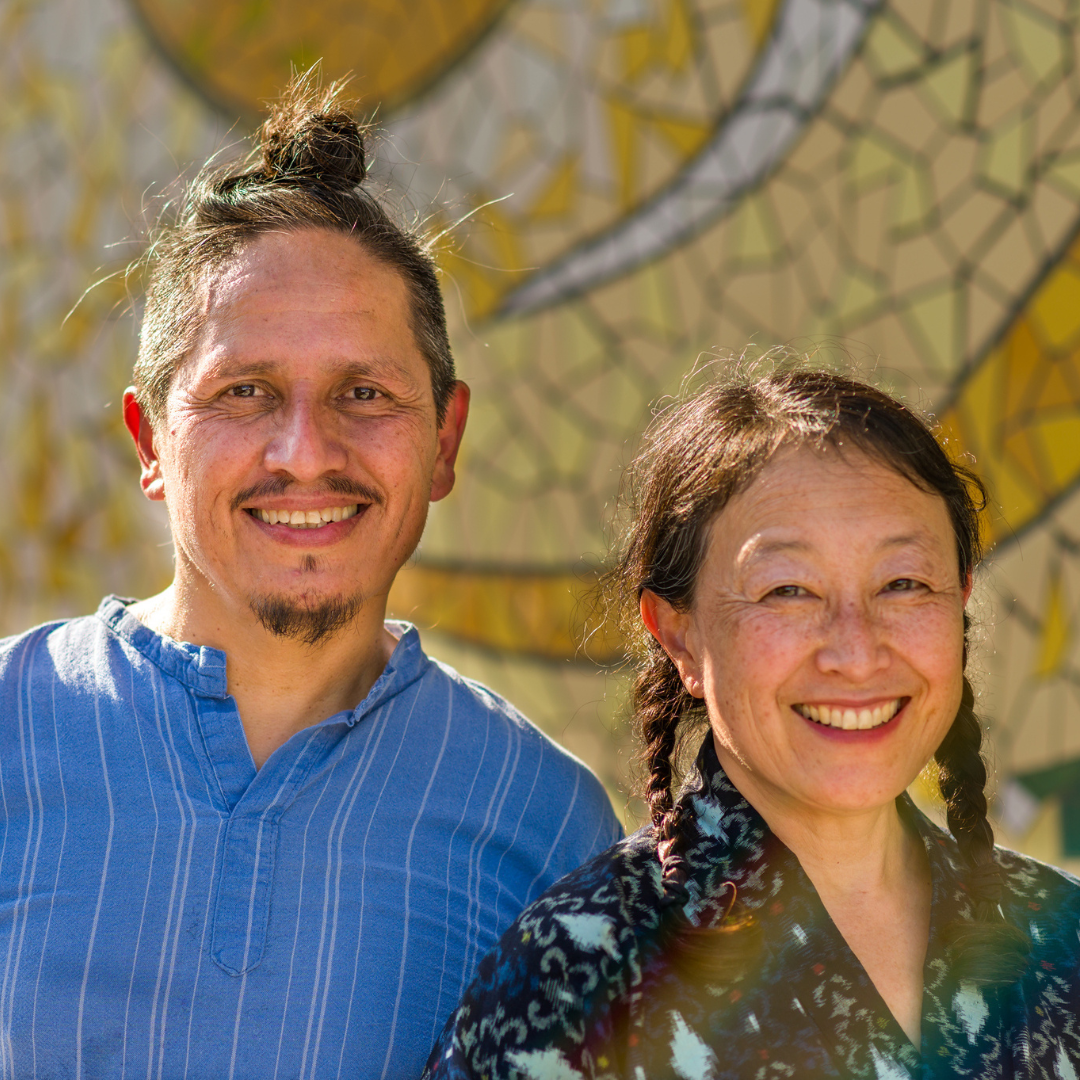Partnership Project: McKnight Artist Fellow | March 17-26, 2015
Written in Water
Ranee Ramaswamy and Aparna Ramaswamy came to MANCC to develop a multi-media production, Written in Water, that employs elements of chance and improvisation. As a child in India, Ranee played the board game Paramapadam—“game of destiny”—that takes players on a symbolic journey through life, highlighting concepts of action and consequence, philosophy and psychology, will and fate, chance, and destiny. Ranee and Aparna chose Paramapadam as the physical space and metaphysical framework of Written in Water. The game (later adapted by the British as Snakes & Ladders) takes players on an allegorical journey, encountering twelve vices (“snakes”) and five virtues (“ladders”) on a search for ultimate wisdom.
The building blocks of the work are seventeen choreographic segments rooted in the gameboard’s seventeen vices and virtues, which unfold upon a projected gameboard. To bring these abstract concepts to life, Ranee and Aparna have drawn ideas and texts from the 12th-century Persian epic The Conference of the Birds and the Sangam literature of classical South India (c.300 BCE-300 CE). Conference’s allegorical quest for ultimate truth parallels the dancers’ progression on the gameboard, while the Sangam authors’ intimate reflections on internal emotion elaborates on the personal, human elements of the vices and virtues. A commissioned score from Amir El Saffar and Prema Ramamurthy intertwines Iraqi Maqam and South Indian Carnatic vocals and instrumentation. The choreographers directly translate the uncertainty of the game to the action of the work. Governed by chance rolls of a die, dancers and musicians move freely between composition and improvisation; no two performances are the same.
While at MANCC, Ranee and Aparna explored movement creation with the dancers and worked with musicians to develop the musical approach. They spent time investigating the projection of the game board on to the stage floor and considered how the dancers will navigate the board. Additionally, they met with FSU Associate Professor in Classics, Dr. Svetla Slaveva-Griffin, and Dr. Claudia Liebeskind, Associate Professor of History, to discuss the text Conference of the Birds and make connections to the Sangam literature of classical South India that the work references.
Previous to their Spring residency, Ragamala‘s newest work, Song of the Jasmine, came to Tallahassee as part of Opening Nights, December 3 - 4, 2014.
This residency was supported, in part, by the McKnight Artist Fellowships for Choreographers, a program funded by The McKnight Foundation and administered by Northrop that supports Minnesota individual artists.
